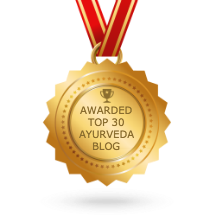Is pranayama better than a Western cardiovascular work out???
Pūraka – be at rest in the sitting posture, inhale three times the normal intake.
Kumbhaka – hold the breath for 20 seconds or more.
This is what just happened……….

Since there is no release of CO2 from lungs to atmosphere, exchange of carbon dioxide from the blood to the lungs increases the quantity of CO2 in the alveolar air > The alveolar air has an increase in CO2 which makes a decrease in the exchange rate of CO2 from the blood to the lungs > There is an increase in the lung ventilation or the ability to disseminate oxygen due to the increased tension of the CO2 in the venous blood oxygen intake and the exchange of oxygen into the blood increases in the lungs due to the increase in lung ventilation > O2HB (oxyhemoglobin) dissociation increases at the site of tissues because of high carbon dioxide tension (pressure) in the blood > cell’s uptake of oxygen increases > the heart rate decreases protecting the heart and increasing the CO2 tension in the blood.

The air from the atmosphere enters the lungs when you breath. Inside the lungs, there is an exchange of O2 and CO2 going on from the lungs to the blood and vice versa. Lungs are more concentrated with O2 than the concentration of O2 in blood after inhaling. CO2 is also more concentrated in the blood than in the lungs. Gases flow from regions of higher concentration to lower due to diffusion. (See Fick’s Law*) O2 flows from lungs to blood and CO2 from blood to the lungs because of this diffusion process at the lungs. The O2 in the blood will form O2HB (Oxyhemoglobin) that detached at the sites of the cells. The O2 is used up by the cells and this releases CO2 and produces energy. This released CO2 is taken to the lungs to be diffused out the alveolar space. CO2 is then released into the atmosphere through exhale. Then the trees eat it up and put out O2. 🙂
We can decrease the diffusion of CO2 from blood to lungs by holding the breath. This increases the CO2 level in the lungs and increases lung ventilation. This increases the lung space used in diffusion of O2 into the blood.

What this means is that the blood has more O2 than normal during kumbhaka than in breathing. The CO2 diffusion from blood to lungs decreases. More CO2 is released in the blood due to the burning of O2. Also, the pressure of CO2 increases due to this burning and this signals detachment of O2 from O2HB at the cell site and a higher utilization of O2 happens. A lower heart rate is created by the increased CO2 levels.
Can you believe all of this happened during that puraka and kumbhaka?
In Pranayama, more O2 intake is possible.
Body energy levels are increased with no strenuous or stressful exercises.
In pranayama their is greater supply of O2 to the cells without the stress to the heart
Cool huh?
There is actually a lot more too.
But what pranayam to do??? There is alot to this as well. It is not that any old pranayama is okay and anything goes. Everything in this world works on details of the fundamentals behind it.
If there is aama, is pranayama okay to be done?
Get the point?
So without knowledge of diagnosis how can a proper treatment be given?



Thank you for this! Very nice explanation.
When pranayama is done as a spiritual exercise, without even the knowledge that is has a health impact, what to do???
Fantastic question.
When anything is taken without knowledge it is purely ignorance. Nothing else.
Every sadhana has knowledge of the details of why and how behind it. Everything in Yoga does as well. Everything has knowledge to understand the specifics of it. For some very ignorant reason today we think that spirituality does not have knowledge behind it and that it is just whatever someone wants to do. This is opposite to the reality of it.
So when pranayama is done without the knowledge behind it, it is like rolling dice. If someone has aama, that aama blocks prana from flowing. Doing a balancing pranayama like anuloma viloma will not work and like a rock thrown into a river the water will carve a new route around it. Meanwhile, doing agnisara or nadi shodana (99% of yoga teacher out there do not have the slightest clue what the difference between anuloma viloma and nadi shodana) will help to get rid of the aama.
Seeing that most people do not have any consciousness to their digestion and just eat what is popularly “healthy” or have any consciousness to time and the world around them and run their lives by a watch (or live by a calendar that has nothing to do with reality of what is time), all of this is really a mute conversation anyway.